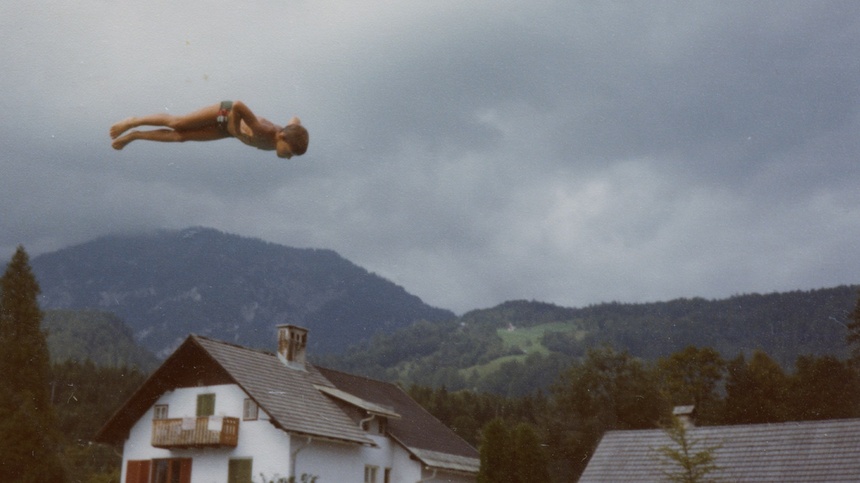Interview: Bogendorfer and Sedmak on INNERE BLUTUNGEN

During the Filmfest in Hamburg I had the opportunity to meet with Austrian directors Florian Sedmak and Anatol Bogendorfer and talk about their film Innere Blutungen. The film entirely consists of found footage and read-out newspaper articles showing rural life in Austria between 1965 and 1975.
What I am obviously interested in is how did you get all this material and how many Super-8 tapes did you have in the end?
Anatol: Concerning the visual part it was quite a quest. We first started with photography and just asked friends and relatives. Later on we went to archives to find material of the period between 1965 and 1975. And it became obvious that in this period there was this great hype of amateur Super-8 films. So we started to place advertisements in the newspaper, looking for amateur films. It was very important to us that it actually was amateur footage because we wanted to give a feeling of daily life. We still searched material during the editing process. In terms of text material it was a different story.
Florian: I went to the archives of the town I come from and worked through eleven years of newspaper coverage. I just wrote down everything that seemed to be of importance to me. Be it something spectacular, something funny or something typical for the time. In the end we had about 200 pages of text, 2700 digital photos and 250 hours of film.
And how did you choose which of all this stuff to use in your film?
Anatol: There was no screenplay or shot list or anything like that. We just experimented for about 1,5 years. We tried out different things during the editing process, where we searched for an intelligent way to cut together image and sound. After this phase we had a common theme. It was important to us that sound and images complement each other instead of just serving the same purpose. We wanted you to hear sounds that were not in the frame and to see images you could not hear. Maybe in the combination of both elements it adds something to their sole reality.
Would you say that your film is an analysis of society?
Florian: Analysis might be too big of a word. It is more about drawing a picture and looking at it. I just wanted to capture the period five years before and after my birth. It is kind of a quest for my socialcultural roots. Somehow this period is suppressed in Austria, but still so many thoughts of it have survived until today, for better or for worse.
Anatol: From this point of view, it is an analytical film. But our approach was purely artistic. We just were thankful for those exciting newspaper stories. They tell something about the time, yes, but we wanted to leave interpretation to the audience. Although admittedly, we prefer to take the perspective of the victims, there is not a clear conclusion. Everyone can find his or her own interpretation and draw parallels to today.
Florian: It is not as if we were great thinkers judging a period almost fifty years later. We are not due to that. And we also show the happiness of people and the positive aspects of the time.
While watching your film I got a strong sense of rhythm and musicality. How important is that aspect of filmmaking to you?
Anatol: Yeah, that is such an important tool for every filmmaker. One should make use of it and think about it a lot. Music was another sector in terms of research for us. We had some original music, folk music of the region which in our opinion is beautiful music. We don't mock about it in the film. It is music between disconcertment and beauty. Andreas Kurz, an avantgarde-artist added some original stuff and we searched for underground pop-music of the era. It was a lot of work to find a rhythm.
Finally I would like to know how it works working together on a project. Are there many arguments? How do you work?
Florian: Our concept is: Strict labor division.
Anatol: Innere Blutungen was our second collaboration. Florian researched and collected in the beginning and gave it all to me, placing a great deal of trust in me by saying: Make a film out of it. For three years we talked a lot and I edited it. In the end Florian came into the editing process and we finished it. There was never an argument. I just had a phase were I thought that we just have too much material and I did not know where to go. But I always knew that this could be a great film and I think it ultimately is.







